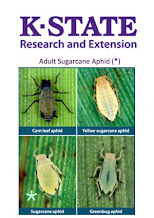Grain-Fed vs. Grass-Fed—What Are the True Differences?
Barrett
Simon, Livestock Agent
There is a large amount of uncertainty
regarding the beef products that we, as consumers, deal with. With all of the health claims and new trends
being promoted within the industry, it is easy to get confused. While many producers in the Post Rock
District produce and eat their own, home grown beef, I hope to shed some light
on the subject for those that buy fresh meat products to put on their table. Grain-fed versus grass-fed beef has been a
hot topic for several years now. While
I’ve noticed many people are firm proponents of one or the other, there are a
large number of consumers who are not aware of the advantages either product
offers.
The United States has grown a unique market
for truly high quality beef. We’ve
recently added China to the long list of countries who are open to importing
our much more consumer satisfying cuts of meat.
Why has our grain fed beef risen to the top? Higher concentrate diets allow for cattle to
reach finished weights faster with an increase in fat deposition. Our cattle are finished at younger ages and
display a much greater degree of marbling.
Grain-fed beef excels in the three factors that consumer panels have
deemed the most important: tenderness, juiciness, and flavor. In regards to healthy eating, grain-fed beef
does have more total fat; however, monosaturated and polyunsaturated fats are
actually deemed to be the “good fats” that are important to the diet. These “good fats” are the same as the fats
that consumers are often encouraged to eat in foods such as nuts or olive
oil. They are found in much more
desirable levels in grain-fed beef products.
Of course we are all familiar with the cost advantage that also plays a
role when deciding between the two types of beef cuts. Grain-fed beef will typically be between two
and three dollars cheaper per pound.
There is no doubt that grass-fed beef is the
leaner alternative. Being lower in total
fat, many consumers think of this as the “heart healthy” option. However, this is a misnomer. The level of cholesterol in the diet has very
little absorption or correlation to the amount of cholesterol within the body
(Peveto). The real health advantage in
grass-fed beef is the amount of Omega-3 fatty acids, B vitamins, and
antioxidants that it contains. Omega-3’s
are said to fight triglyceride levels within the blood. There are also claims of improved joint
health due to the amount of Omega-3’s in the diet. These fatty acids are nearly twice as rich in
grass-fed beef. Now, at approximately 35
milligrams of Omega-3’s per serving, grass-fed beef is still far behind the
1,000 plus that can be offered with salmon (Aubrey), but it is an improvement
over grain-fed beef in that regard.
A brief note—when buying ground beef, realize
that fat is added during the process to meet the desired percent lean. Ultimately, the fat content of ground beef is
the buyer’s preference and is not effected by whether the product is grain or
grass-fed.
After that, it is up to the consumer to decide
on the flavor they prefer, the price they pay, and how they prepare the
beef. While studies and panels may be
able to predict palatability and consumer satisfaction, they can never fully
pinpoint an individual’s preferences.
Sources
· Peveto, Kyle “After Years of Study High
Cholesterol Foods—Red Meat, Eggs, and Butter—Are Found to Play a Very Small
Role In Raising Cholesterol” http://www.theadvocate.com/baton_rouge/entertainment_life/health_fitness/article_4987ca54-6b24-5209-adde-bd93570a403b.html
7/20/14
· Aubrey, Allison “The Truth About Grass-Fed
Beef” http://www.npr.org/2010/04/08/125722082/the-truth-about-grass-fed-beef
4/8/10
Post Rock
Extension District of K-State Research and Extension serves Jewell, Lincoln,
Mitchell, Osborne, and Smith counties. Barrett Simon may be contacted at Barrett8@ksu.edu or by calling the Mankato Office at 785-378-3174, Smith
Center Office 785-282-6823, Beloit Office 785-738-3597, Lincoln Office 785-524-4432, or Osborne Office 785-346-2521. Join
us on Facebook at “Post Rock Extension” along with our blog site at postrockextension.blogspot.com. Follow us on Twitter @KSRE_PostRock. Also
remember our website is postrock.ksu.edu








